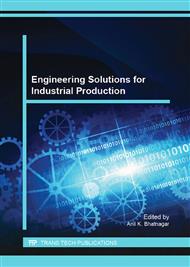p.39
p.44
p.50
p.54
p.59
p.68
p.73
p.78
p.83
The Rapid Engineering Aero-Heating Calculation Method for Hypersonic Vehicles
Abstract:
The rapid engineering aero-heating calculation method for hypersonic vehicles is established for the question of computational efficiency during conceptual design stage. First the pressure distribution along vehicle’s surface is calculated by modified Newtonian theory. Secondly, the streamline along the surface is calculated with Newtonian steepest decent concept. Then by using reference enthalpy method, the heat flux on the surface is given. Finally, the heat flux on the surfaces of blunted cone, lifting body and wave-rider vehicle is calculated The analysis result shows the method used in this paper is fit for hypersonic vehicles, and can satisfies the aero-heating calculation during conceptual design stage in both efficiency and accuracy.
Info:
Periodical:
Pages:
59-67
Citation:
Online since:
July 2015
Price:
Сopyright:
© 2015 Trans Tech Publications Ltd. All Rights Reserved
Share:
Citation:


